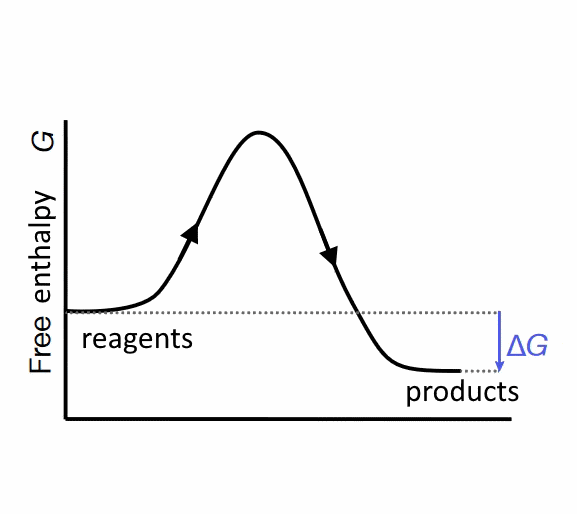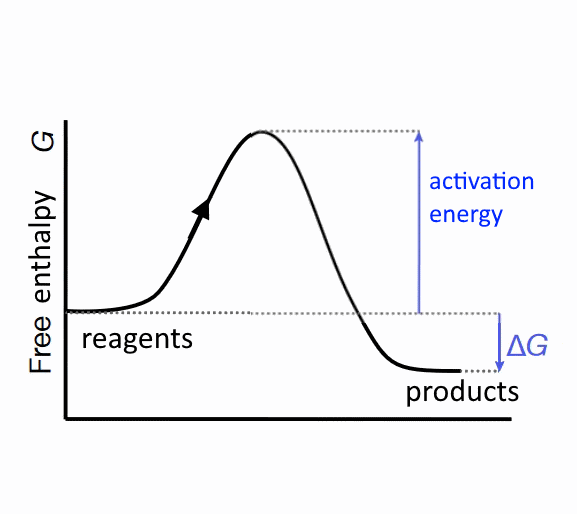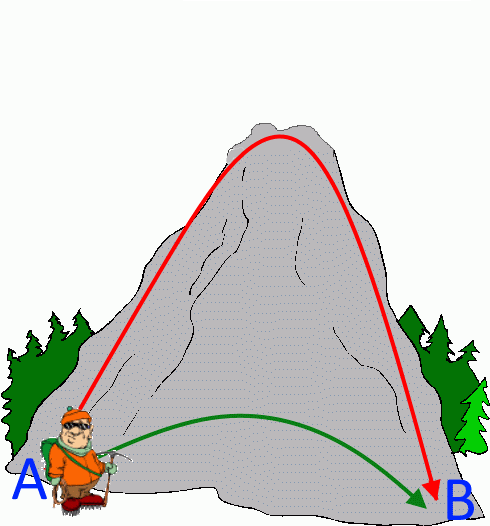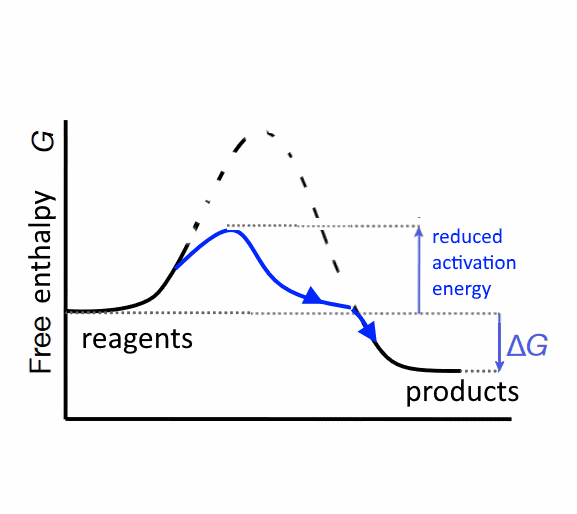







Spontaneity of reactions The variation of the → Gibbs free enthalpy determines whether a reaction is spontaneous or not.

In this case, the free energy difference of Gibbs $ \Delta \; G $ between products and reagents is negative. The reaction is spontaneous, but that does not mean it is fast!
Reaction speed, activation energy The speed of a spontaneous reaction essentially depends on the height of the activation energy barrier between reagents and products.

This barrier stems from the fact that a reaction must often pass through energetically unfavorable intermediates:

To go from A to B, Pompommymountain has every interest to take the greenway: It is faster and he will gain as much energy as by the red one!
Catalysts A catalyst reduces activation energy by providing less energetic intermediates.

The catalyst thus accelerates the chemical reaction. A simple example is → here . In biochemistry, the catalysts are called enzymes .
Lactose Lactose is a dimer of $ \beta $-galactose and $ \beta $-glucose . This is the main sugar of milk. In the intestine its hydrolysis is catalysed by the enzyme lactase . This is the first step in its digestion.

Lactase The enzyme lactase (a $ \beta $-galactoxidase) is a highly complex polypeptide with a molar mass greater than 15000:

The colored bands represent polypeptide chains.
Lactose intolerance A lack of lactase (Causes: genetics, intestinal injury or, it seems, a too privative prior regime in dairy products ..) leeds to an intolerance which manifests itself in diarrhea, cramps, vomiting, gas ..